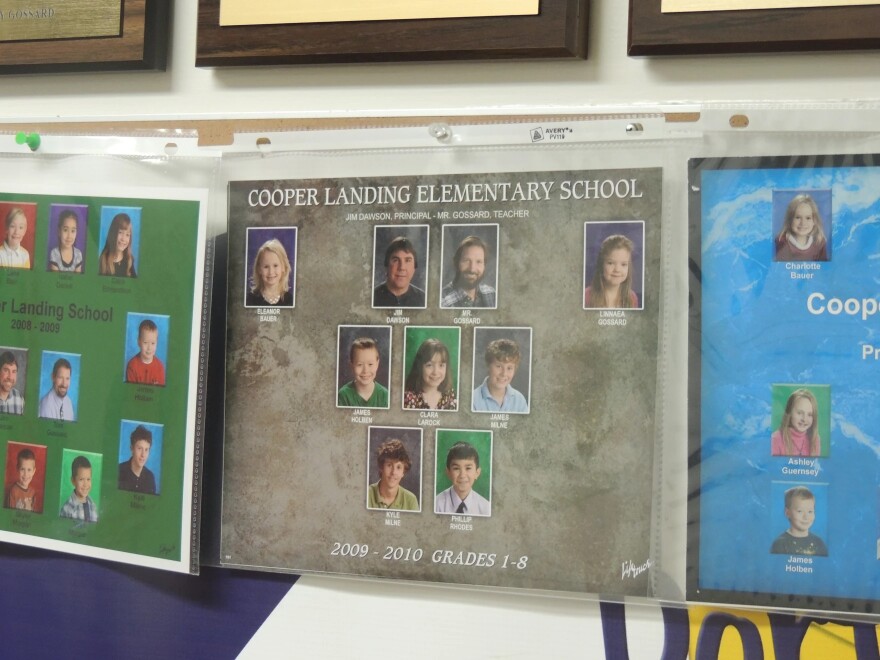Funding for Alaska’s schools is always in flux. Questions of budget cuts and school consolidation are never off the table, even for the state’s biggest districts.
But Alaska’s smallest, most rural schools are watching one very important number each fall: student enrollment. When schools in Alaska drop under 10 students, they lose their full funding from the state and could be closed by their districts.
This year, three of the Kenai Peninsula Borough School District’s three smallest schools are all safely above that number: the Cooper Landing School has 17 students, Hope has 18 and Moose Pass has 19.
It hasn’t always been that way.
Sandra Barron just started her sixth year as the teacher in Moose Pass. She said in her time at the school, she’s been lucky to never have had any close calls with low enrollment.
“But there is always this thing in the back of people’s minds that if the numbers are too low, then they might consider closing the school,” Barron said.
Between 1999 and 2017, an average of two Alaska public schools closed each year, almost all due to low enrollment. Several years back, a proposal to change the threshold from 10 to 25 students triggered the #smallschoolsmatter campaign, which highlighted the 65 schools that would have closed if that policy went into place.
In 2017, two small schools closed because of small student numbers, on St. George Island and in the Interior. Just this year in the Fairbanks area, three elementary schools closed due to low enrollment.
Barron said back in the ’80s, the schools in Moose Pass, Cooper Landing and Hope all had around 40 or 50 students.
That all changed as the demographics in those communities shifted. In Cooper Landing, as the area became more of a seasonal vacation community, its student population dropped.
Tom Gossard has been the teacher at the K–12 school since 2006. He said other, more recent changes in the makeup of the community have affected enrollment, too — like when state troopers left Cooper Landing, or when Chugach Electric’s local employees relocated.
On Wednesday, Gossard pointed to a wall in the Cooper Landing School, showing class pictures from the past 16 years.
“We had steady enrollment, and then it just kind of went down a little, and then it dropped down there a lot in 2009 and 2010,” he explained. “And that’s when you could have two years of below 10 [students] before they cut funding. And then after that, we started rebuilding back up.”
Today’s policy is less forgiving. When schools have fewer than 10 students for one year, they’re on the chopping block.
Gossard said during that period of low enrollment in 2009, the principal at the time told him it was critical that they had 10 students by the next year.
“I even had nephews live with us, to help with kids,” he said.
Patti Truesdell worked in the Hope School for 10 years. When she first arrived in Hope, there were only five students.
“It was pretty critical,” she said.
For Truesdell, the solution was convincing homeschooling parents to put their children back in public school — and quickly. When she arrived, even the secretary and custodian who worked at the school didn’t send their kids there.
“We had to show them that they were gonna get a high quality education,” she said.
One family in particular was homeschooling three students. Truesdell wanted to convince the mom that the Hope School could serve her children — and in a few weeks, she did. That mom was Christen Peck, who today is a teacher at the Hope School.
Truesdell said in her last year at Hope, someone took in two foreign exchange students from Europe, bolstering the school’s enrollment.
Truesdell, now a district school board member, says one answer might be to form a small-school committee that discusses solutions to enrollment and teacher retention in the district’s small, outlying schools.
“When a community is down to five students in their school, they are traumatized. The community was in trauma, no doubt about it,” she said. “They were fixing to lose their school.”
But Hope is still hanging on — even through 2010, when residents feared a land sale in the community would bring in wealthy out-of-towners and displace families with young kids. Truesdell told the Los Angeles Times then that the school was an important part of the community for everyone.
And today’s teachers, like Tom Gossard, agree.
“We’re the heartbeat of the town. This is the focal point.”
You can find the original story here.






